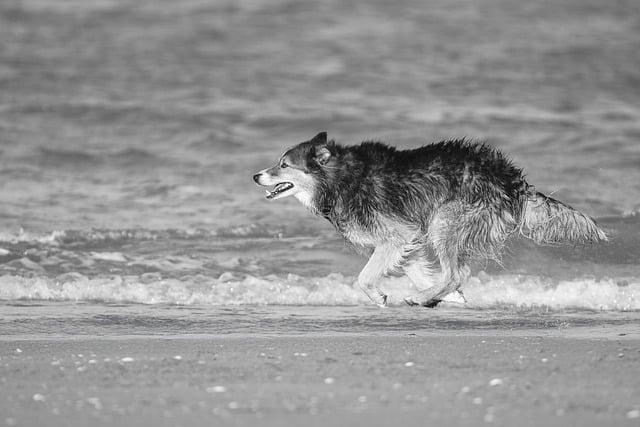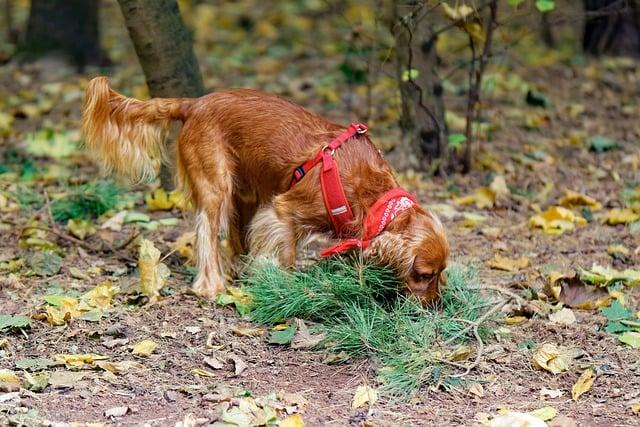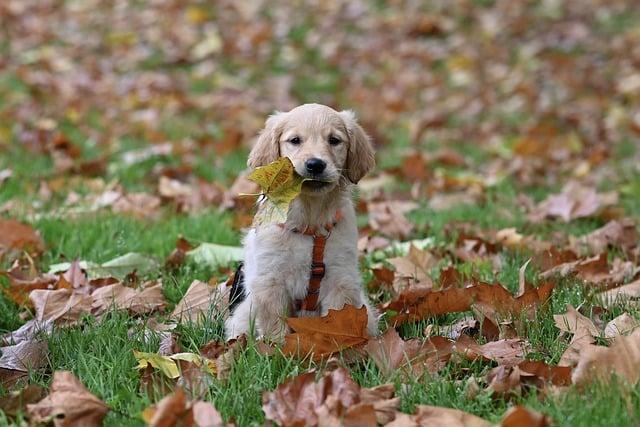Imagine coming home after a long day, and your loyal dog greets you with a wagging tail and a joyful bark. As you bend down to pet him, he plants a big, wet kiss on your cheek. It’s a heartwarming moment, but should you let your dog lick you? While dog saliva contains enzymes that can help heal wounds, it also harbors bacteria. To protect your health, consider limiting those affectionate licks. Instead, show love through cuddles and playtime. Your bond will grow stronger, and you’ll both stay healthier!
Contents
- Understanding the Health Implications of Canine Saliva
- Evaluating the Emotional Bond: The Role of Affectionate Behaviors
- Establishing Boundaries: When Licking Becomes a Concern
- Promoting Hygiene: Best Practices for Safe Interactions with Your Dog
- Q&A
Understanding the Health Implications of Canine Saliva
Canine saliva is often viewed through a lens of affection and companionship, but it carries with it a range of health implications that pet owners should consider. While many dog owners enjoy the playful licks from their furry friends, it’s essential to recognize that saliva can harbor bacteria and pathogens. Studies have shown that dog saliva contains a variety of microorganisms, some of which can be harmful to humans, particularly those with weakened immune systems.
One of the primary concerns is the potential transmission of zoonotic diseases, which are diseases that can be passed from animals to humans. Some of the bacteria found in dog saliva, such as Capnocytophaga canimorsus, can lead to serious infections in humans, especially if there are open wounds or compromised skin barriers. Additionally, parasites like Giardia can also be transmitted through saliva, posing a risk to human health.
Moreover, while dogs are often seen as clean animals, their mouths can be home to a diverse microbiome that includes both beneficial and harmful bacteria. The act of licking can introduce these microorganisms into human mouths, potentially leading to gastrointestinal issues or other infections. It’s crucial to understand that what may seem like a harmless gesture of affection can have unintended consequences for your health.
To mitigate these risks, it’s advisable to establish boundaries regarding licking. Consider training your dog to show affection in ways that don’t involve licking, such as cuddling or gentle nudges. Regular dental care for your pet can also help reduce the bacterial load in their mouth, making interactions safer. Ultimately, being informed about the health implications of canine saliva empowers pet owners to make better decisions regarding their interactions with their beloved companions.
Evaluating the Emotional Bond: The Role of Affectionate Behaviors
When considering the dynamics of your relationship with your dog, affectionate behaviors play a pivotal role in strengthening the emotional bond between you. Dogs are naturally inclined to express their love and attachment through various actions, and licking is one of the most common ways they do so. This behavior is not merely a sign of affection; it can also be a reflection of their trust and comfort in your presence.
Understanding the significance of licking can help you appreciate the depth of your dog’s feelings. When your furry friend licks you, it can signify several things, including:
- Affection: Licking is often a way for dogs to show love and care, similar to how they would groom their pack members.
- Seeking Attention: Your dog may lick you to get your attention, indicating they want to engage or play.
- Comfort and Reassurance: In moments of stress or anxiety, licking can serve as a self-soothing mechanism for dogs, and they may extend this behavior to you as a way to seek comfort.
Moreover, licking can also have a social component. In the wild, dogs lick each other as a form of greeting and bonding. By allowing your dog to lick you, you are participating in this natural behavior, reinforcing the connection you share. This mutual exchange of affection can enhance your relationship, making your dog feel more secure and loved.
However, it’s essential to consider hygiene and personal comfort when it comes to this behavior. While licking can be a sign of affection, it’s crucial to maintain a balance that respects both your boundaries and your dog’s needs. If you’re comfortable with it, allowing your dog to lick you can be a delightful way to nurture your bond, but always ensure that it’s done in a safe and clean manner. Ultimately, the decision should reflect your comfort level and the unique relationship you share with your canine companion.
Establishing Boundaries: When Licking Becomes a Concern
While many dog owners find their pet’s licking to be a sign of affection, it’s essential to recognize when this behavior crosses the line into something more concerning. Excessive licking can indicate underlying issues that may require attention. Understanding the reasons behind this behavior is crucial for maintaining a healthy relationship with your furry friend.
One of the primary reasons dogs lick is to communicate their feelings. However, if your dog is licking excessively, it could be a sign of anxiety or stress. Dogs often resort to licking as a coping mechanism, which can lead to compulsive behaviors if not addressed. **Signs of anxiety** to watch for include:
- Destructive behavior when left alone
- Excessive barking or whining
- Changes in eating or sleeping habits
Another concern is the potential for health issues. Dogs may lick themselves or their owners excessively due to allergies, skin irritations, or infections. If you notice your dog licking a specific area of their body or if they seem to be fixated on licking you, it may be time to consult a veterinarian. **Health-related signs** to consider include:
- Redness or swelling on the skin
- Foul odor from the mouth or skin
- Changes in behavior, such as increased aggression or withdrawal
establishing clear boundaries is vital for both your dog’s well-being and your own comfort. While occasional licking can be a sweet gesture, allowing it to become a habit can lead to unwanted behaviors. Training your dog to understand when licking is appropriate can foster a more respectful relationship. **Tips for setting boundaries** include:
- Redirecting their attention with toys or treats
- Using commands like “no” or “off” consistently
- Rewarding positive behavior with praise or treats
Promoting Hygiene: Best Practices for Safe Interactions with Your Dog
When it comes to our furry companions, understanding the implications of their affectionate gestures is crucial. While a dog’s lick may seem harmless and even endearing, it’s important to recognize that their mouths can harbor bacteria and parasites. This is why maintaining proper hygiene is essential for both you and your pet. By following a few simple practices, you can enjoy safe interactions without compromising your health.
First and foremost, **regular grooming** is vital. Keeping your dog clean not only reduces the risk of transmitting germs but also enhances their overall well-being. Regular baths, brushing, and dental care can significantly minimize the bacteria present in their mouths. Additionally, consider using **pet-safe wipes** to clean your dog’s face and paws after outdoor activities, ensuring that any dirt or pathogens are removed before they come in contact with you.
Another important aspect to consider is your dog’s health status. **Routine veterinary check-ups** are essential for monitoring your pet’s health and preventing the spread of infections. Vaccinations and parasite control can help keep your dog healthy, which in turn reduces the likelihood of harmful bacteria being present in their saliva. Always be mindful of any changes in your dog’s behavior or health, as these could indicate underlying issues that need attention.
Lastly, it’s crucial to establish boundaries regarding licking. While it’s natural for dogs to express affection through licking, teaching them when it’s appropriate can help maintain hygiene. **Positive reinforcement training** can be effective in guiding your dog’s behavior. Encourage alternative forms of affection, such as cuddling or gentle petting, to foster a loving bond without compromising your health. By implementing these best practices, you can enjoy a close relationship with your dog while prioritizing hygiene and safety.
Q&A
-
Is it safe for my dog to lick me?
Generally, dog saliva is not harmful to humans. However, it can carry bacteria and parasites. To minimize risks, ensure your dog is healthy, up-to-date on vaccinations, and regularly checked by a vet.
-
What does it mean when my dog licks me?
Licking is a natural behavior for dogs. It can signify affection, submission, or a way to explore their environment. Understanding your dog’s body language can help you interpret their intentions.
-
Should I encourage my dog to lick me?
While occasional licking can strengthen your bond, excessive licking may indicate anxiety or stress. It’s essential to set boundaries and redirect your dog’s behavior if it becomes too frequent or obsessive.
-
Can dog licking transmit diseases?
While the risk is low, certain diseases can be transmitted through dog saliva, such as parasites or bacteria. Practicing good hygiene, like washing your hands after interactions, can help mitigate any potential risks.
while the bond between you and your dog is invaluable, it’s essential to weigh the potential health risks of allowing them to lick you. Prioritize hygiene and consider alternatives to strengthen your connection without compromising your well-being.

大家好,我是彼得潘,專業的手法身體治療師。我喜歡探索和研究各種主題,並透過與人工智慧的合作分享專業、實用、有趣的文章。我們定期進行人工審核,以確保內容的準確性。如果您發現文章中有任何不準確的地方,請隨時與我們聯繫,我們會及時糾正。您可以透過 [email protected] 與我們聯繫。



